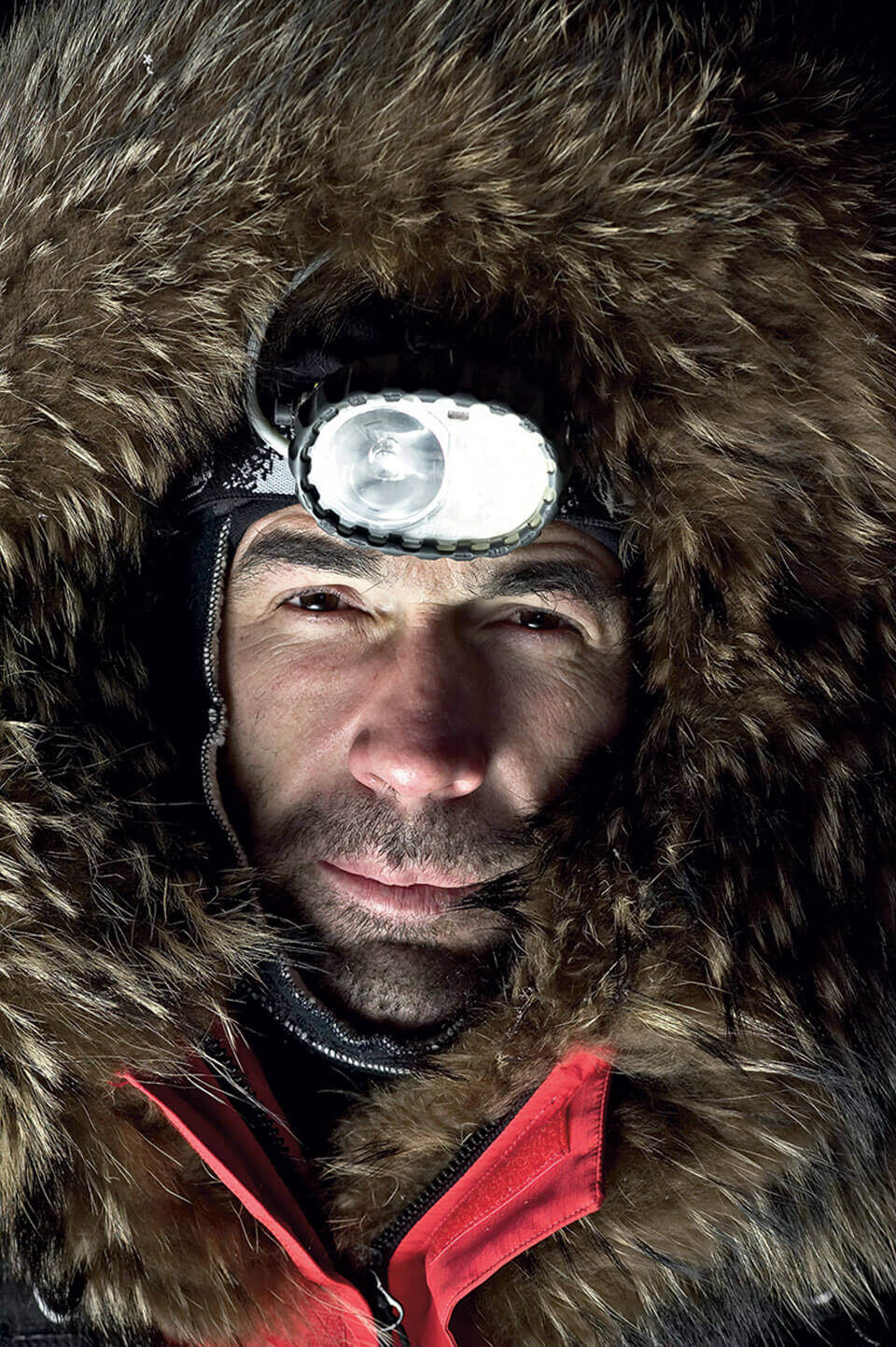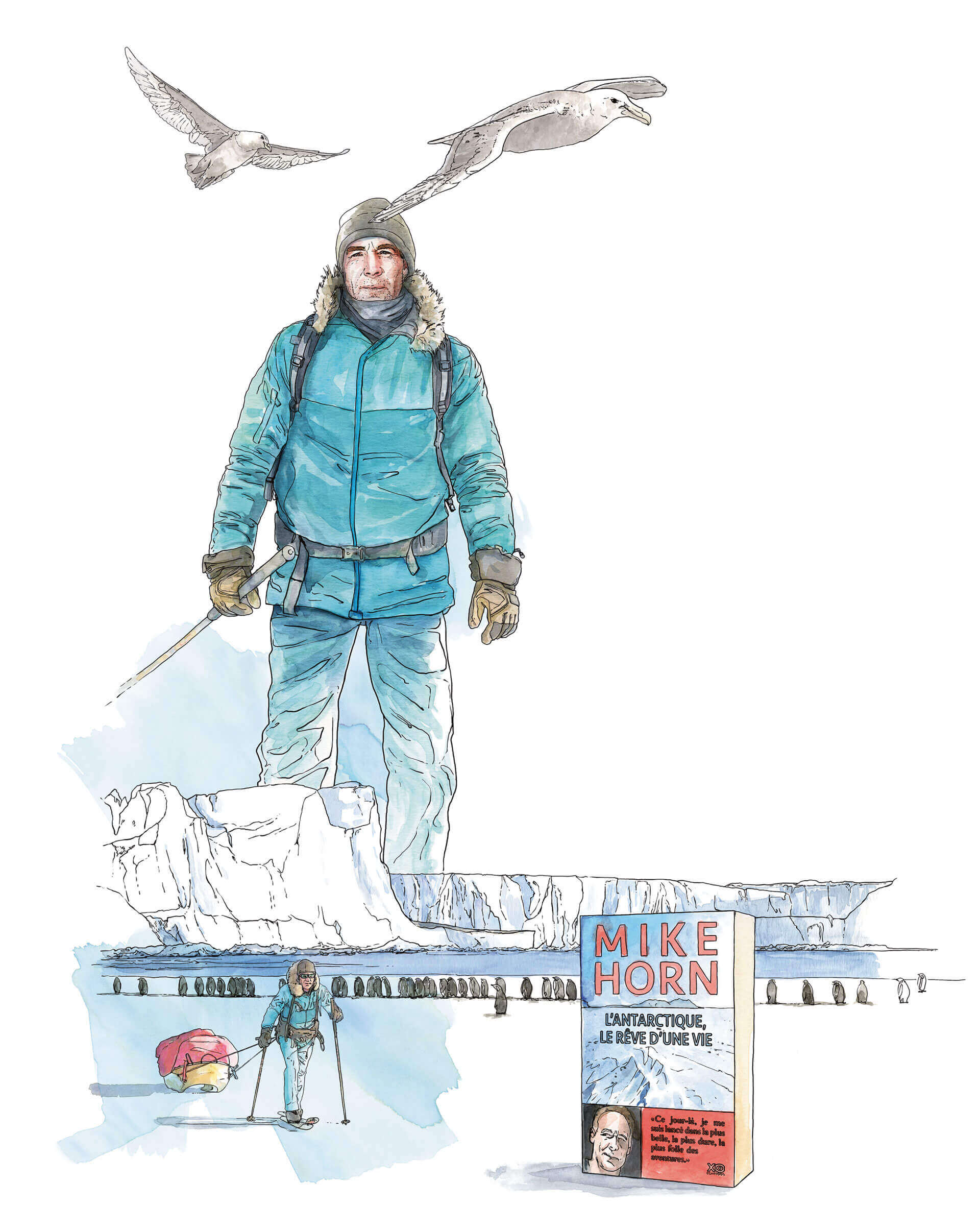A steely mindset : “Everyone wants freedom, but not everyone necessarily knows what to do with it”. You have to be prepared for all kinds of hardships and unforeseen events to stay on track. The drive to succeed must overcome the fear of failure, because in environments like these, ‘failure is not an option’.

Interview with Mike Horn

Biography
Mike Horn was born on 16 July 1966 in Johannesburg (South Africa).
Mike has successfully completed many expeditions to the two polar regions, including a 15-day crossing of Greenland (2002), a 20,000-km trek around the Arctic Circle (2002-2004), exploring the North Pole at night (2006) and crossing Antarctica alone in 57 days, achieved in 2017 as part of the Pole2Pole Project, a circumnavigation of the world via the two poles, begun in 2016. This adventurer has also faced challenges on land - including the climbing of the Himalayan mountain, K2. Pole2Pole should be complete by the end of this year, with a triumphant return to its port of departure: Monaco.
It’s clear from your career so far that you seem to have been attracted to faraway lands from a very early age, as well as by the idea of living several lives. What was the trigger that led you to traverse the globe on ever more spectacular expeditions?
Mike Horn. I was born and raised in South Africa, where my early years were very traditional: education, army, the start of an interesting professional career, and so on. But I drew a line under that life when I left my native country at 24 for a random destination: Switzerland. That was the first flight to Europe! I loved sport, nature, travel and adventure. And I did all of those in Europe and then moved on to South America. But a paragliding accident had me stuck in a hospital bed for a month... So I had a long time to think, take stock and think about the future. And that’s when I made the most important decision of my life: to become an explorer.
What do you expect from the challenges you regularly set yourself?
M.H.: When I’m far from civilisation, I find that braving the most extreme elements brings me answers to questions that would haunt me if I was just sat at home in an armchair. Essentially, I explore inaccessible places to discover who I am. I would never feel like a whole person if I couldn’t satisfy my passion for nature in its most inhospitable glory.
So yes, I push those personal boundaries all the time. My father once told me “If you’re not afraid of your dreams, then you need to dream bigger”. And that’s the essence of my life as an explorer.
Pole2Pole is perhaps your most amazing trip so far, especially the time you spent in Antarctica. In what way was it “the dream of a lifetime”?
M.H.: As a child, I was fascinated by stories of Ernest Shackleton and Roald Amundsen’s expeditions to the South Pole. They made me want to become an explorer like them, and that dream has never left me.
So is the dream satisfied, or are you already planning your next expedition? Or perhaps you have a completely different type of project in mind?
M.H.: I want to go back to K2 to be the first to conquer one of its ridges. At 8,611 metres altitude, K2 in Pakistan is the world’s second-highest mountain.
My attempt in 2014 stopped 200 metres short of the summit due to bad weather. Those who pressed on triggered an avalanche and died as a result of it. But I have the chance to try again, adding in an additional difficulty – a ridge that has never been climbed – to write a new chapter in the history of K2. We also have to complete the Pole2Pole journey, and, if all goes well, my boat will appear over the horizon in Monaco at the end of November or early in December.
You’ve had a boat built in Brazil. Why there?
M.H.: Because that’s where I found the aluminium I needed, but more importantly, I’ve been able to build it with some of the most underprivileged people living in a São Paulo favela. I always try to bring a new dimension of meaning to what could be considered as just another sporting achievement. Another major challenge for me is helping young people to become more aware of environmental issues. Certainly the areas in which I can be most effective have changed, and I want to work now with up and coming generations. And then, when conditions permit, I take young explorers with me on my journeys to make them more aware of the importance of protecting our planet.
What is your take on mass tourism, whose environmental footprint is now a hot topic, particularly in terms of polar tourism?
M.H.: Tourism in Antarctica and the Arctic has yet to become mass tourism. I would say that these continents are protected by their “hostility”: ice that drifts on the surface of the sea and cannot therefore be built on, and extreme temperatures for nine months of the year; we humans can’t live north of the Arctic Circle. Most journeys to these regions are by boat, and that access is very tightly regulated. Tourists don’t really stay in these places; they simply take a walk around, admire their beauty, and so on. And that imposes only a very small environmental footprint. The real fear would be the possible arrival of airports and aircraft!
What books do you take with you on expeditions?
M.H.: I always take a Bible. I’m not a practising Christian, but I love rereading certain passages, including those telling stories of miracles. Perhaps it’s because in my life as an explorer, I must hope and believe in miracles when I am alone, injured and sometimes lost, with no idea which direction I should take.
What Mike always keeps in his backpack
A thirst for life : “If you’re not afraid of your dreams, then you need to dream bigger”. At the other end of the world, conditions can be extreme. Being able to find pleasure in even the most challenging situations allows you to excel yourself to explore virtually unknown territories.
A favourite saucepan, with built-in stove : Lost somewhere around kilometre 160 of his last polar expedition, this technological ‘jewel’ capable of melting 5 litres of ice “without it taking the whole night” had travelled with Mike Horn to the four corners of the world for fifteen years.
Optimism : “We each have an average of 30,000 days on Earth. So what do you want to do with them?” The explorer is the most direct witness of the world around us and the way it is changing. Mike Horn’s ‘Young Explorer’ programme has enabled 400 young people from 40 countries to join the explorer on expeditions between 2008 and 2012. Upon returning to their own countries, they have initiated more than 100 environmental projects between them !
A survival kit :
- A strong one-piece knife for DIY, treating yourself, eating, defence...
- A torch (and batteries) for light and to send SOS signals.
- A lighter. It takes up virtually no space and is always useful!
- An indestructible water bottle and water purification tablets... the best invention in the world, according to Mike Horn.

L'Antarctique, le rêve d'une vie*
Mike Horn’s book mirrors his own unique and warm personality. Between its covers, he shares his crossing of Antarctica in what sometimes reads like a thriller, alternating exhilarating episodes with periods of total discouragement. He talks about those who have mattered in the life of the explorer he became: his late parents and wife, and his two daughters.
Far from being the epic story of a superhero, his is the story of a man lucky enough to live a life he is passionate about.
Published by XO Éditions (in French), 2018, 286 pages.
(*) Antartica, the dream of a lifetime




